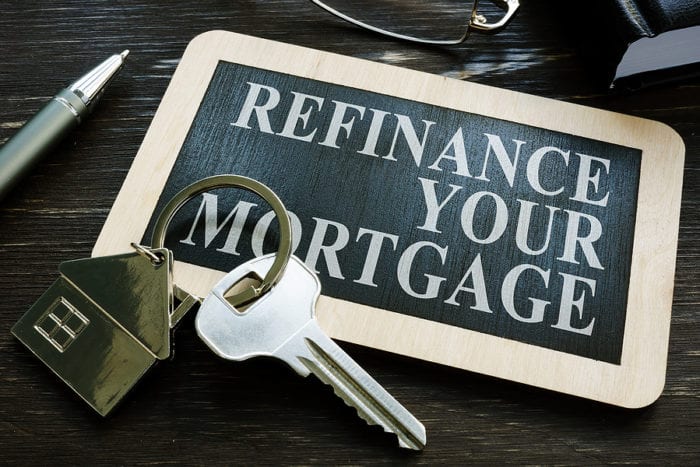Home flipping can bring a fast buck for almost every serious investor, especially when the real estate market is booming. Conversely, this venture is hazardous. Many first-time investors rush into flipping projects without adequately preparing and make costly mistakes, diminishing profits or leading to significant financial losses.
This article highlights five common pitfalls that new house flippers face: fixing and renovation costs, ignoring market trends, wrongly setting property values, choosing the wrong financing, and disregarding indisputable inspections. Additionally, learn why distressed properties can be an attractive, overlooked option for any astute investor looking to enter the house flipping market.
The Exciting But Risky World of House Flipping
House flipping refers to an investor buying residential property cheaply in the market, renovating it in the required areas, and selling it fast for profit. Unfortunately, the media and TV shows glamourize it as a fast route to making money, and this allure beckons numerous green investors pounding hard for a quick return.
In reality, flipping involves huge financial risks and demands a well-drawn plan. New investors often get washed away by unexpected expenses, bad sales, and a lack of understanding of their markets, realistic budgeting, or project execution. Flipping is about research done properly, factors that beginners often overlook.
Mistake #1: Underestimating Renovation Costs
A significant setback for inexperienced first-timers in finance is underestimating renovation budgets. Initial budgets usually do not consider hidden structural problems, surprise repairs, inspections, permit fees, and the real cost of labour and materials. If the budgets do not fit, the investor might either not be able to get further financing or, worse, start cutting corners in the process, putting down the quality of the project and eventually the resale value.
It is wise to call in professional contractors to inspect a property before purchase and get a detailed written estimate covering all possible renovation expenses; this will help avoid all such issues and needless expenses. A 15% to 20% contingency should also be budgeted for any unforeseen costs. If well planned and accurately budgeted, your renovation will ensure steady cash flow and profit margins.
Mistake #2: Ignoring Market Conditions
One of the new investors’ most significant errors is neglecting to research the current real estate climate. Thus, flipping depends on understanding local orientations, buyer preferences, and how good a neighbourhood is considered at certain times. Without this, one doubly risks buying in stagnant or declining areas, where reselling becomes challenging and unprofitable.
Before starting any project aimed at flipping, a thorough study of the local housing market should be done. An investor must know the sales price trends, the property details, the days-on-market statistics, and regional economic traits. Working with mature agents who understand neighbourhood dynamics would help identify areas with strong buyer demand in conjunction with sufficient conditions for a successful flip.
Mistake #3: Overestimating Property Value After Renovations
New investors often assume renovation will massively enhance the property’s value and justify a high resale price. Renovation budgets make one of the top financial pitfalls for inexperienced first-time investors. The first budgets are usually developed without any allowance for hidden structural problems, surprise repairs, inspections, permit fees, and the real costs of labour and materials. If budgets come up short, investors might be unable to secure additional financing. Or worse, they may choose to skip it entirely by cutting corners, ultimately compromising the project’s quality and diminishing its resale value.
Having the property professionally inspected by contractors before purchasing it and getting a detailed written quotation that lists every conceivable renovation expense will avert difficulty and unnecessary expense down the road.
Mistake #4: Failing to Secure Proper Financing
Another critical error involves disregarding proper financing arrangements. Many new investors do not appreciate the intricacy and cost of financing a flipping project, and sometimes use credit cards with high interest rates or short-term loans with very rigid repayment schedules excessively. The inadequacy of funding, however, causes budget strains and forces investors into hasty sales or refinances at very high costs.
Successful investors analyze their financing alternatives, from special short-term renovation loans to home equity lines of credit (HELOC) or private mortgages. An investor should work with a mortgage broker or a lender who understands flipping projects so that the financing can be structured very flexibly and fit the project. Funding arrangements that all parties can agree to and that have manageable interest rates with reasonable repayment terms and clear exit strategies give investors a greater level of financial security and, hence, a greater chance for success.
Mistake #5: Skipping a Thorough Property Inspection
Another standard error that beginner investors commit is skipping thorough inspections. If an investor rushes to closing a transaction without being able to detect hidden structural faults in the building, plumbing, or electrical-related problems, signs of mould, or an infestation, it enters into the construct. Should these matters arise after the purchase, the renovation expenses multiply exorbitantly and eat into potential profits.
Flip properties are always to be professionally and fully inspected before purchase. Inspection reports will reveal the crucial issues requiring addressing so the investor can either budget accurately for the repairs or negotiate a well-informed purchase price. Spending upfront on thorough inspections significantly reduces the chance of surprise crunches that ruin the budget. It helps all other parties to agree upon a feasible renovation budget and timeline realistically.
Distressed Properties: The Hidden Gem Every Investor Should Consider
One of the most neglected yet profitable schemes is buying distressed properties that have gone through foreclosures for sale-related purposes. Most such properties sold well below market value leave room for a ransom profit post-renovation and resale. Purchasing these types of properties on cheap terms enables the investors to spare more money on the actual improvements, making the property much more attractive and profitable on resale.
However, one must not take this lightly. Adequate research and due diligence must be done. Investors should explore these properties, verify a title, and get a precise estimation of renovation costs that will provide maximum gains. With careful planning and project management, distressed properties become very low-risk income assets.
Some chase quick profits, while others stay patient and set realistic expectations for their returns. Avoiding mistakes like underpricing, poor financing, or skipping inspections boosts your chances of success.






